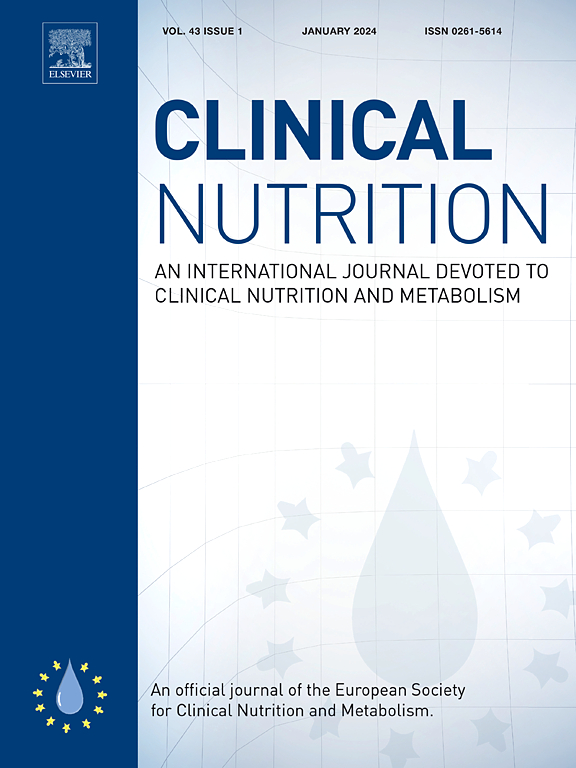Effect of ultra-processed food consumption on the gut microbiota in the first year of life: Findings from the MINA–Brazil birth cohort study
IF 6.6
2区 医学
Q1 NUTRITION & DIETETICS
引用次数: 0
Abstract
Background and aims
The first years of life are fundamental for the establishment of the gut microbiota, with diet being one of the main early exposures. During this period, the beneficial effect of breastfeeding on modulating the gut microbiota is well known; however, there are important gaps in the literature on the effects of ultra-processed food (UPF) consumption, particularly in longitudinal and large sample designs. Through a prospective birth cohort study, we investigated the effects of UPF consumption on the gut microbiota of children during the first year of life.
Methods
This study included children from the MINA–Brazil birth cohort with gut microbiota data (16S rRNA) available at the 1-year follow-up (n = 728). Data on breastfeeding practices were collected after childbirth and during follow-up visits. Complementary feeding was measured using a semi-structured questionnaire, referring to the day before the interview at the 1-year follow-up. A combined variable was generated according to breastfeeding practices and UPF consumption and was used as an independent variable in the adjusted median regression models, with alpha diversity parameters as the dependent variable. Beta diversity was analyzed using PERMANOVA according to Bray–Curtis dissimilarity and Distance-based Redundancy Analysis (db-RDA) adjusted for covariates. Relative abundance was analyzed using ANCOM-BC (corrected by FDR) and MaAsLin2 adjusted for covariates.
Results
Weaned children who consumed UPF showed a significant increase in alpha diversity for all parameters in the median regression models (Observed ASVs: p = 0.005; Shannon index: p = 0.036; Chao index: p = 0.026; Simpson index: p = 0.012) and in beta diversity (PERMANOVA: p = 0.006; db-RDA: p < 0.001) compared to breastfed children who did not consume UPF. Breastfed children who did not consume UPF had a higher relative abundance of Bifidobacterium than weaned children who consumed UPF (both p < 0.001 for ANCOM-BC and MaAsLin2) and a lower relative abundance of Firmicutes (p < 0.001 for MaAsLin2), Blautia (both p < 0.001 for ANCOM-BC and MaAsLin2), Sellimonas (p = 0.008 for ANCOM-BC) and Finegoldia (p = 0.045 for MaAsLin2) than weaned children who consumed UPF.
Conclusion
These findings suggest that UPF consumption may negatively impact the diversity and abundance of the gut microbiota, with a more pronounced effect in children who have already been weaned.
求助全文
约1分钟内获得全文
求助全文
来源期刊

Clinical nutrition
医学-营养学
CiteScore
14.10
自引率
6.30%
发文量
356
审稿时长
28 days
期刊介绍:
Clinical Nutrition, the official journal of ESPEN, The European Society for Clinical Nutrition and Metabolism, is an international journal providing essential scientific information on nutritional and metabolic care and the relationship between nutrition and disease both in the setting of basic science and clinical practice. Published bi-monthly, each issue combines original articles and reviews providing an invaluable reference for any specialist concerned with these fields.
 求助内容:
求助内容: 应助结果提醒方式:
应助结果提醒方式:


